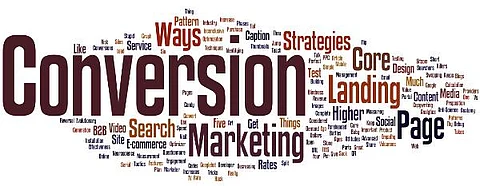

You have a set up an E-commerce website. Made it look pretty and engaging. You are counting the rising number of hits each day. But, are these hits converting into sales? Most of us have a negative answer for this question.
Let us now learn what are the ways to convert these hits into larger sales numbers.
1) Create optimised landing pages:Having optimised (ideally locally optimised) landing pages for products that searchers are landing on your site for is ideal. Having a landing page gives customers instant information about whatever products you are selling and gives them an easy layout to click through to the specific product they may need. Landing pages are great for shoppers who are looking for general items within a specific category but like to have some additional information before they purchase.
2) Always show reviews on your products: From personal experience, buying an item that has great reviews or between and stars out of stars makes the product more appealing and trustworthy as it has been used and enjoyed by fellow shoppers. Having customer reviews visible on your product pages also creates unique user-generated content for your site free of charge, making your product pages easier to land on through Google searches. There is something about knowing another person has used and enjoyed what you are about to purchase that makes shoppers more comfortable with taking out their wallets.
3) Have an easy to use checkout system: It is important to limit the amount of steps between a customer adding a product to their cart and buying that product. Having features like PayPal makes checking out easier for millions of potential customers, and having an easy to use checkout system where you can enter your billing and shipping information (on the same page is ideal) to purchase the product will also give customers less time to change their mind.
) Invest in a redesign: If your site structure is intact but your front-end could use a facelift, invest the money into a properly redesigned site. Having an easy to navigate site that is keeping up with current online trends is very important. People will usually pass up your site if it looks like it was created and designed in 1998. It is time to get rid of the small-animated GIFs of trucks delivering products and spinning money signs and bring your site into the 21st century.
5) Use feedback forms: It is sometimes difficult to think of your business as anything other than your business. It is important to collect customer feedback so you can begin thinking like a customer in regards to your business again. Once you have collected enough comments from customers you can begin to identify what parts of your site or processes need work and which to focus more energy on.
6) Show the MSRP prices: Always make it look like your customer is getting a deal, even if they aren’t. Most sites show the MSRP (Manufacturer Suggested Retail Price) with a strikethrough and the “sale” price underneath. If you want to take this a step further you can put the MSRP, selling price, and final sale price to make your customers feel they are really getting a good deal. This of course cannot be done for every product so pick and choose products that have historically been difficult to move or are higher in price.
7) Always give the customer choices: On a product page, list similar products in case the page they are on does not meet their needs. Having another option to look at is better than being stuck at a dead end and potentially losing your customer and a possible sale. By showing similar products, the customer may decide to go for a more expensive product that is similar to what they originally wanted due to reviews or ratings. Even if they decide to buy a product cheaper than their original choice, a sale is a sale.
8) Help make buying choices: Always keep your customers from just browsing and “shopping” without any direction. Always make suggestions and offer deals to direct the customer towards making a purchase. Without direction many shoppers will simply leave your site or question their decisions. If you are actively using proper sales processes and leading your customers towards the checkout or towards spending more money, you have a higher chance of making a sale.
9) Create bundles: While offering 10 per cent off the price of one item is a good sales tactic, bundles are much more effective. Telephone companies often take advantage of bundles by having individual choices marked at higher prices with the price of the bundle taking a significant amount off of the total of buying both services. An example is offering Internet at 50$ per month and television at 100$ per month, but offering a bundle of both for $115 per month. At this point more people would gravitate towards purchasing the bundle because they will feel like they are getting the Internet for free or at least at a bargain.
10) Target the right customer: If you understand your main customer base then you already have a leg up on the competition. It is crucial to research and truly understand who your target market is so you can effectively construct marketing campaigns that will entice your potential customers. You can easily look at your customer’s demographics using tools like Google Analytics to gain a better understanding of whom you are selling your products to.
Follow DiamondWorld on Instagram: @diamondworldnet
Follow DiamondWorld on Twitter: @diamondworldnet
Follow DiamondWorld on Facebook: @diamondworldnet
